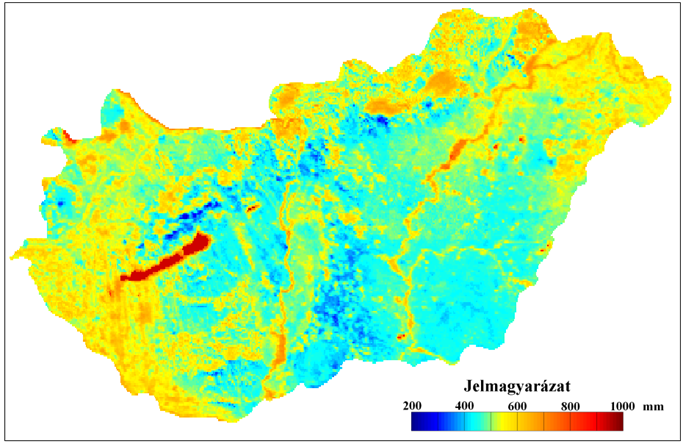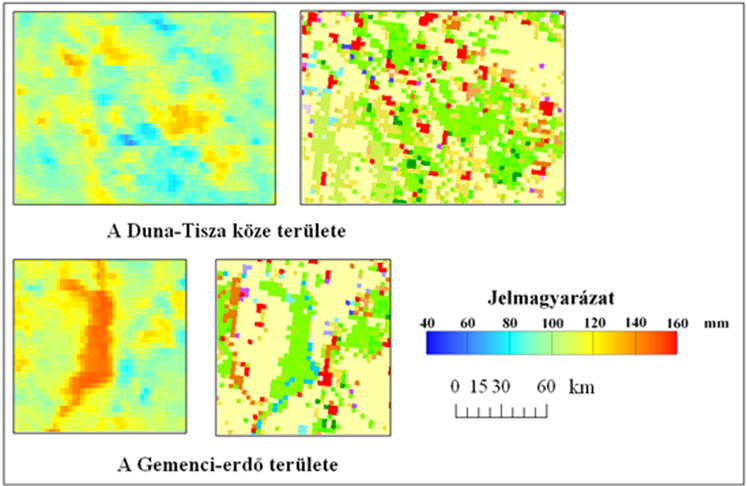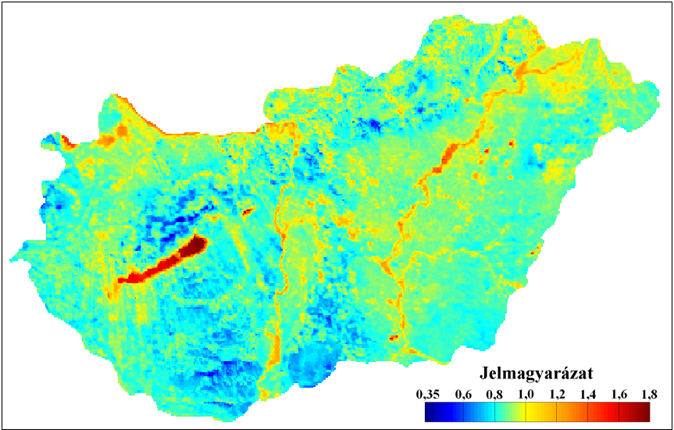Hydrology
Determination of the rainfall-runoff relationship is the central focus of hydrology. It cannot be achieved without knowing the evapotranspiration (ET) rate of the watershed, as the main water loss term for surface runoff. Accurate estimation of evapotranspiration from routine meteorological observations (air temperature, humidity, insolation) is one of the last, not at all trivial, great challanges in hydrology.
Figure 1 displays the mean annual evapotranspiration rates at a ca. 1-km spatial resolutaion obtained by the complementary relationship of evaporation and MODIS surface temperature data, beside routine meteorological observations.

Fig. 1 Mean annual evapotranspiration rates based on data of 9 years (2000–2008).
Figure 2 illustrates the water-retention capacity of forested areas via their increased ET rates.

Fig. 2 Evaportranspiration rates in June. Forested areas (indicated by green on right-side maps) emerge with their high ET rates.
The water recycling efficiency is seen in Figure 3 as the ratio of mean annual ET and precipitation rates.

Fig. 3. Mean annual ratio of ET and precipiaton rates in Hungary based on data of 9 years (2000-2008).
